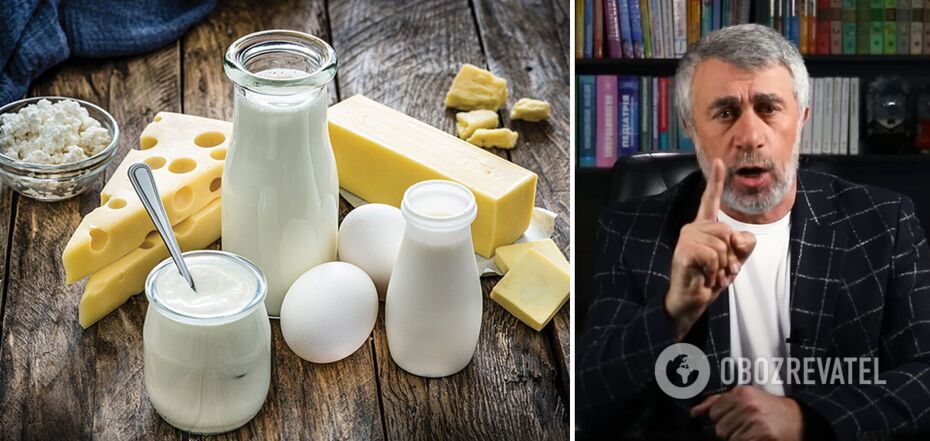News
Fat, low-fat and skimmed milk: Dr. Komarovskyi explains their difference and which is better for children
Child nutrition is the most painful issue for any mother, so the abundance of advice on the Internet that a woman comes across in the process of raising a baby can be confusing. This also applies to recommendations on whether to give the child milk and what kind it should be: full-fat, low-fat or skimmed.
In his blog, Ukrainian pediatrician Dr. Yevhen Komarovskyi talked about all the key features of this product and gave his recommendations on how best to introduce it into a child's diet. To watch the video, scroll down to the end of the post.
First of all, he reminded us that humans are mammals, meaning that they feed their babies in infancy with milk: a newborn human cannot eat anything else at this stage of life.
At the same time, animals that feed their young in this way stop consuming this product after the feeding is complete and are unable to store milk and dairy products for later consumption. Humans, evolutionarily designed for a similar approach to nutrition, broke both of these rules in the course of development: they began to consume animal milk as adults, make different foods from it, and store it. And the mutation that allowed people to drink milk as adults proved to be very useful for the survival of humanity and spread.
The enzyme lactase is responsible for the body's assimilation of milk as it breaks down the milk sugar lactose. In childhood, this enzyme is very active, and this feature disappears with age. Therefore, a child does not need to be limited in milk consumption: his or her body can handle it easily, unlike an adult's body.
Another important characteristic of milk is its fat content. People most often consume cow, goat, and sheep milk. The fat content of cow's milk rarely exceeds 3.5-3.8%, goat's milk is just over 4%, and sheep's milk is over 7%. In some dairy products such as cream, butter, or cheese, this percentage can be much higher.
At the same time, Dr. Komarovskyi drew special attention to the difference between low-fat and skimmed milk. In the latter, fat is removed completely, while in low-fat milk its level is reduced to a minimum. "Many people disagree that people should be limited in fatty dairy products. Because both sour cream and butter are very tasty, and many people want it and love it. And they categorically refuse to raise the topic of low-fat dairy," the doctor said.
At the same time, the doctor emphasized that the discussion about the advisability of consuming fatty dairy products cannot apply to children. Children need to consume high-quality fats. "It is absolutely not necessary to consciously buy something low-fat or low-fat dairy products for a child. A child needs fat," Komarovskyi said.
The doctor pointed out that all professional medical communities dealing with nutrition recommend that even adults limit their intake of animal fats to 20 grams per day rather than give them up altogether. If you exceed this dosage, you may indeed have problems with the cardiovascular system, overweight, diabetes, etc. Anything up to, but not too much less than, is more likely to be beneficial.
"20 grams a day is not enough. But much less is not necessary either. Why? Not only because fat is a solvent for a huge amount of vitamins. But also because, by depriving ourselves of fats, we deprive the body of a powerful enough source of energy. And as a rule, the lack of fats in the diet leads to terrible hunger, and very often a person compensates for the lack of fats with a large amount of carbohydrates," Dr. Komarovskyi said.
The doctor recommended that adults consume low-fat dairy products more often in order to diversify their diet. Not to cover all the body's needs for animal fats with a large amount of fatty milk but to leave room to eat other foods with this component. The doctor advised not to take nutritional recommendations as a dogma but to understand the nuances and not to give up your favorite foods and to use them wisely.



























